Is fishing ethical? Being ethical means acting humanely towards others. Therefore capturing, killing and eating fish against their basic desire to live—from commercial practices to casual recreational anglers is considered immoral and unethical.
However, proving the sentience of aquatic animals, in addition to the populations who need to eat fish to survive, adds endless shades of grey to this answer.
With up to 2.7 trillion wild-caught fish and 14.8 million tonnes of farmed fish harvested for human consumption each year, the concerns of sustainability, slave labour, and public health are growing, and rightly so!
What’s troubling is that most of us don’t realise the impact of consuming fish due to a lack of education and labelling at the point of sale.
In Australia, for example, when buying fish at restaurants, takeaways and cafes, businesses are not required to display:
- What type of fish is in the meal
- What region is the fish from
- How the fish was caught
Growing up, I had no idea that “flake” at my local fish and chips shop was shark meat.
In this post, we look at the most common forms of fishing related to the volume of death produced and what we can do as individuals to reduce this devastating impact.
But first, we’re going to cover the fundamentals of fish sentience and the fascinating food chain that exists in our waters. These sections will be referenced throughout the article as we put each fishing practice under the microscope.
Understanding the aquatic food chain and our role as humans
To understand the ethics of fishing, we need a firm grasp of freshwater and oceanic ecosystems. Admittedly, I had a fantastic time learning about our waters—as it took me back to middle school.
Here’s an oversimplified breakdown of the food chain.
Level 1 – Primary producers
Primary producers are plant species, including seagrass, algae and all their variants.
These plants absorb the sun’s energy from the bottom of the ocean and turn it into food through photosynthesis. They also convert carbon dioxide and nutrients (faeces, decomposed fish bodies) into organic matter.
What’s crazy is that these primary producers are the engines behind the ocean’s ability to absorb a third of the world’s CO2.
Level 2 – Primary consumers
Primary consumers are the herbivores of our waters, feeding on the primary producers. They include various microscopic organisms such as infant fish, coral, snails, and some larger floating creatures like jellyfish.
Level 3 – Secondary consumers
Secondary consumers are mostly carnivores who feed on primary consumers and other animals at this level. Examples include crustaceans, small fish, and eels. However, there are also omnivores at this level, like turtles.
Level 4 – Tertiary consumers
Tertiary consumers are larger-sized carnivorous animals who eat both primary and secondary consumers. This group includes tuna, whales, barracuda, small sharks, penguins, seals and otters.
Level 5 – Apex Predators
Apex predators are some of the most well-known animals to humans and are what we imagine when thinking of our oceans’ depth. Examples include orcas, great white sharks, dolphins, tiger sharks, giant whales and crocodiles. They’re highly carnivorous and feast on secondary and tertiary consumers.
These are large, strong and fast animals with huge appetites. They generally reproduce slowly in comparison to the other levels.
Level 6 – Apex+ predators
While you may assume that orcas are at the top of the aquatic food chain and have no natural predators, you’d be wrong. It’s humans that are the most lethal predators of our waters.
The combination of our high tech equipment, or desire for recreational activities and insatiable appetites makes for the ultimate predator. Even a great white shark looks like a puppy dog in comparison.
The connection between the levels of the food chain
Water ecosystems are very interdependent as energy is passed up and down the food chain.
Any imbalances across these levels lead to inconceivable destruction of all life in our waters.
By overfishing, we’re competing with other animals as we take primary food sources away, eradicating biodiversity. This is a situation where the death we cause through fishing and pollution leads to even more deaths. Just look at some of these numbers as a result of overfishing:
- 181 shark species are endangered or critically endangered due to taking their fins, bycatch and sourcing shark meat.
- Bluefin tuna population levels are down to 5% of the original population before fishing. They’re now critically endangered, yet we continue fishing for this species.
- Between Iceland, Norway and Japan, over 100,000 dolphins and whales are killed each year for pet food, pharmaceuticals and local meals for tourists.
These are a few of many alarming statistics regarding how we’re disrupting our waters’ natural balance.
Do fish feel pain?
A common objection to the idea that fishing is cruel or immoral is the perceived lack of fish’s sentience.
Fish are alien to humans, and we struggle to relate to them. For one, they live underwater, and we don’t.
Culturally, we play down fish. We view their biology as inferior to our own.
I’ve had pet goldfish in the past, but I couldn’t tell you their names or how they died. I don’t even think I have a photo of my fish. Yet, I remember all the experiences I had with my pet birds when I was younger and my dog.
When it comes to compassion, fish along with insects receive the short end of the stick. We don’t believe these animals feel pain—and therefore, their death is inconsequential.
Is this perspective true? Let’s look at some indicators as to whether fish feel pain.
Fish has nociceptors
Nociception is the part of the sensory nervous system that processes stimuli such as temperature, mechanical pressure and chemical reactions. It then sends that information through the spine and to the brain.
In practical terms, nociception is how animals detect and evade potential harm—and from my understanding, it is the most fundamental measure of perceived pain.
Researchers have found nociceptors in the head of fish. The application of poisonous substances on the fish’s lips resulted in an increased heart rate and overall discomfort.
Conversely, plants don’t have pain receptors and a brain and therefore cannot process stimuli in the same way as fish and other animals.
Fish can detect, assess and alleviate pain
Dr Lynn Sneddon is one of the world’s leading scientists in aquatic animal biology, and her body of work regarding fish pain is comprehensive.
In one of her experiments, she set up two aquariums. One was utterly lifeless, and the other had gravel, plants and other fish. When she gave zebrafish the choice between the two aquariums, they consistently preferred the chamber with life in it.
Some fish were injected with acid in the next activity, and the empty tank was flooded with pain-numbing lidocaine. What happened to the zebrafish? They switched their preference away from the enriched chamber and into the lifeless one.
To further test the zebrafish’s ability to process pain, Dr Sneddon made one tweak to the experiment. Instead of putting the painkiller into the boring tank, she injected it straight into the fish’s bodies, giving them the option to take it with them.
With the painkiller, the fish decided to stay in the tank for life.
Do fish feel pain in the same way as humans?
When discussing the morality of inflicting pain on fish, folks often argue that fish don’t feel pain in the same way as humans; therefore, it’s justifiable to cause them harm.
This is partly true, as fish have different physiology to humans. For instance, fish don’t have a neocortex that processes sensory perception at a high level.
But while fish are different, there are overlapping physiological elements to humans, as previously exhibited.
Fish may not function at the same level as humans, which doesn’t necessarily mean they don’t experience pain in the same way as us.
Furthermore, humans struggle to relate to other humans’ pain, so perceived relatability of pain shouldn’t be so dominantly weighted when assessing the cruelty to fish.
Different approaches to fishing and their level of ethics
Fish sentience and ecology are the foundations for assessing the ethics of fishing. Even then, there are so many ways human intervention has an impact—ranging from massive industrial operations to casual weekend fisherman.
We’ve already established that catching and killing fish despite their sentience is considered inhumane, but understanding the extent of the damage beyond one individual fish requires more analysis.
One of the most devastating results of fishing is bycatch. Bycatch is all of the other aquatic animals unintentionally caught in the process of fishing. These fish are typically thrown back into the ocean, dead or dying.
Approximately 40% of all fish caught is bycatch, creating an incredibly unsustainable and unnecessary practice to seek more profit.
Below we look at the most common approaches to fishing to help us make better decisions related to consuming and interacting with aquatic animals.
Is commercial fishing ethical?
Production of fish and seafood has quadrupled in the last 50 years, while the global population has more than doubled in that period. We’re also consuming twice as much seafood!
The combination of explosive population growth and increased demand for seafood per person has led to unprecedented fishing levels.
Commercial fishing is all about capturing as many fish as possible in the most efficient way to feed the masses.
Just under 50 per cent of fish on this scale is wild-caught while the rest is farmed. For this section, we’re reviewing the wild-caught industrial fishing, and in the next section, we’ll cover farmed fishing practices.
So what are the most common methods for commercial wild-caught fishing?
Purse seine
Purse seine fishing uses a large net, up to 2 kms long and 200 metres deep, to circle a school of fish.
Think of it as casting a ginormous net pouch with a drawstring across the ocean, then tightening the net to capture every living thing inside.
Eventually, the fish are scooped up and dropped into the boat for sorting.
The unnecessary death caused by this fishing style varies depending on the net’s size, where the fishing is taking place, and how well the fisherman targets the fish.
Generally, pursing, as it’s known, is a non-selective fishing technique that results in large amounts of bycatch, including juveniles, whales, dolphins, sharks and sea turtles.
Bottom trawling
The name sounds just as bad as this fishing practice. Bottom trawling is where fishing boats lower a weighted net to the ocean floor and scrape their desired catch into the nest.
This bulldozing method of fishing is commonly used to capture shrimp and squid but does so at the cost of all marine life that happens to be hanging out in the targeted area. Think back to levels 1 and 2 creatures in the aquatic food chain, getting wiped out needlessly.
Beyond the ethical concerns of trawling, destroying habitats at the bottom of our waters makes it harder for aquatic life to thrive and repopulate.
Bottom trawling is so destructive that it’s banned in certain areas. However, even then, it still happens—especially under the watch of corrupt governments and poor law enforcement in developing nations.
I should also mention that there’s another trawling method called midwater trawling. As the same suggests, midwater trawling pulls the net through the water but off the bottom of the ocean floor. It’s still destructive as it produces bycatch, but it’s not as devastating as bottom trawling.
Gillnets
Imagine a giant spider web in the shape of a wall positioned in the middle of the ocean to capture herring and salmon. That’s effectively what a gillnet is.
To set up a gillnet, fishers suspend the net wall between a lead line at the bottom and a cork line at the top attached to flowing objects. Once the gillnet is in place, the targeted fish unknowingly swim into the wall, and their gills get tangled and therefore trapped.
Gillnets are efficient as they don’t require large boats to use. However, this fishing style attracts large amounts of bycatch, and like trawling, has been banned in some regions.
Longline
Longline fishing is where baited hooks are placed on a longline at intervals and thrown into the water. Sometimes lines are weighed down to the ocean floor to catch groundfish, and other times, the line is placed just below the surface level of the water.
Once the prey has been hooked, longliners pull their catch out of the water, which often includes baited bycatch from sea turtles, sharks and seabirds.
Longline operations vary in size from a one-person boat to larger crews.
Pole and line
Pole and line fishing is where fish is caught one by one using a fishing pole, line and bait. Pole and line are commonly associated with recreational fishing as it generally isn’t cost-effective to use commercially to catch fish at such a slow rate.
With that said, with increased consumer awareness of sustainable fishing, brands are starting to respond by hiring more pole and line fishers to provide a more responsible product.
As this is a highly targeted approach to fishing, there isn’t any (or very little) bycatch and is, therefore, the most ethical way to fish out of all the methods so far. So if you’re going to consume tuna, for example, look for brands that use the pole and line method.
Dredging
Dredging sounds terrible, doesn’t it? Well, it kind of is. This fishing technique is where a fisherman uses a large metal rake at the bottom of the ocean to dig up and catch shellfish such as oysters, clams and scallops.
Similar to trawling, dredging is highly damaging both in terms of bycatch and destroying natural habitats.
Traps
Traps are used to capture crabs and lobsters at the bottom of the ocean. Often referred to as crabbing, this is a straightforward process of attaching bait to a netted or caged trap and throwing it into an ocean.
At this point, fishers sit back until the crustacean walks into the trap before getting pulled out of the water.
Bycatch isn’t generally a problem with crabbing as fish can easily swim in and out of the trap; however, depending on the scale, it can be disruptive to the aquatic ecosystem’s biodiversity.
Fishing equipment is just as damaging as consumer plastics
While we’re on the topic of commercial fishing practices, a byproduct of these activities is the plastic waste from fishing nets.
Fishing nets that are abandoned or lost at sea make up 46% of the total plastic in the Great Pacific garbage patch.
And that doesn’t even include all the other fishing equipment! That’s just as impactful as consumer plastics, yet all the mainstream media seems to focus on is reducing plastic straws, bags and bottles (which, of course, we still should).
In addition to the unethical and unnecessary killing that comes with wild-caught commercial fishing, we must also consider the death and ecological harm from the fishing equipment used—further compounding the issue.
Are you supporting unethical slave labour by eating fish?
Beyond the ethics of sea animals’ life and well-being, there’s another ethical consideration resulting from commercial fishing and forced labour.
Imagine spending seven months out at sea, away from your family, working 18 hour days packing fish, drinking condensation water from the air conditioner, eating “off” fish, and sleeping on the vessel floor. So if that isn’t horrifying enough, you don’t get paid.
According to senior researcher David Tickler from the University of Western Australia, 40% of the global catch at sea is at high risk for this modern slavery.
Overfishing has depleted stock levels, and captains are looking to cut costs through labour to remain profitable. Regulations are in place, but they’re almost impossible to enforce because of the difficulty of monitoring activity at sea.
New crewmembers take on the job expecting decent working conditions and an agreed wage. Little do they know that they’re about to be deceived, mistreated and unpaid.
Like our concern for animals, the same should be extended to our fellow humans exploited every day for empty promises.
This is just another devastating result of buying cheap seafood at your local supermarket.
Is fish farming ethical?
If you’ve seen fish being marketed as sustainable or responsibly sourced, they likely come from a farmed environment.
Fish farming, also known as aquaculture, is breeding and raising fish for consumption or conservation.
Farmers find targeted female and male species in the wild and kill them to extract their eggs and milt (fish sperm) for artificial reproduction.
Fish farming has been used for centuries but became commercialised in the 1970s.
The most common species of fish farmed are salmon, carp, tilapia and catfish.
Aquaculture, like land farming, still leads to a mass slaughter of animals against their desire to live and can’t be considered ethical or moral.
Is it a more ethical and sustainable option when compared to industrialised wild-caught fishing? Perhaps. Let’s delve a little deeper.
What’s the goal of aquaculture?
In theory, fish farming is designed to successfully harvest an infinite number of fish while significantly reducing the damage to our natural oceans and lakes through the wild-caught methods. That’s why many believe that aquaculture is the solution to the growing demand for fish protein.
At first glance, fish farming sounds like a much better solution to fishing in the wild. There’s no bycatch, we can manipulate how fish are grown for our consumer tastes, and they’re easier to regulate than trying to monitor all the fishermen across our oceans.
However, aquaculture practices don’t come without compromise, and as consumers, it’s essential to understand potential concerns with the fish you’re often unknowingly buying.
Below are six reasons why fish farming is unethical.
1. Farmed fish eat more than they produce
When you think of common fish we eat, I bet tuna and salmon come to mind. And you’re right. These species are amongst the most popular seafood only after shrimp.
With such high demand for these species, ranchers are scrambling to take advantage of this lucrative market. The endangered bluefin tuna sells anywhere between $40 and $5,000 per pound. Yes, you read that correctly.
The problem is tuna and salmon are carnivores and hungry ones at that! To farm them means sourcing custom fishmeal consisting of wild-caught fish.
Here in Australia, our most prominent salmon farmer Tassal uses 2kgs of wild-caught fish to produce just 1kg of farmed salmon.
To feed tuna requires 10kg of feed to 1kg of tuna produced.
We’re fishing millions of sardines, anchovies and other small fish to feed premium farmed fish.
This aquaculture approach may make economic sense but is highly unethical when crunching mathematics on fish death caused by producing feed.
2. Wildlife is shot when protecting fish stock
With highly concentrated areas of fish farming pockets, it’s not hard to see why other predators like seals will be tempted to see if they can get in on the action.
Seals are highly efficient predators, and if they get access to a fish farm, the farmers will lose much of their stock levels.
To protect their investment and limit “written off” stock on the books, ranchers try to scare seals away using beanbag guns, explosives and relocation. And let’s face it, some ranchers would be straight up killing seals.
In Tasmania, 8,700 beanbag bullets have been fired at seals around aquaculture sites since 2013 to deter them from accessing the fish farms. The ABC reported that many of the seals were blinded and deafened from the attacks.
It should be noted that some fisheries are trying their best to use non-lethal methods to deter seals, but it’s a work in progress, as these predators are persistent.
3. Farmed fish are polluting the natural waters and themselves
A good majority of fish farms are set up in natural waters, including bays and ponds.
Fish are subject to confined living spaces. For instance, on average, salmon is 75cm (29.5in) long but will get the equivalent of a bathtub of water to explore in a farm cage.
With such a small living area, it’s easy for fish to build toxic waste such as uneaten food, dead carcasses, faeces, and chemicals (more on that in a minute).
If the farm is in a location where there isn’t a strong natural current, the waste will sink to the bottom of the ocean floor below the cage and into the wild waters. Some of this waste also kills seagrass on the ocean floor, degrading level one species in the food chain.
4. Antibiotics are used to treat sick fish
Following on from the previous point, the waste generated by farmed fish increases the chances of disease and illness to the animals.
Parasites commonly form on fish and eat away at the gills. It’s a dreadful disease that can lead to the parasite leaking out of the cage and harming wild fish.
Farmers use antibiotics to combat various diseases, another chemical that enters our food and our waters.
5. Farmed fish drive out wild fish
Sometimes fish manage to break free from the farm and enter the wild. We’re talking about semi-domesticated fish pumped with chemicals getting ready to explore the oceans and interact with wild animals. Not good!
It’s estimated that the escape rate for farmed fish is 1% which is still 148,000 farmed fish in the wild. But then we have situations where, randomly, a disastrous fire melts part of the cages enclosure, which leads to 50,000 salmon escaping.
Whether it’s human error or a natural disaster, aquaculture’s establishment opens up more risk on all levels—economic, ethical and sustainable.
6. Restrictions lead to mass deaths of fish
Fish are sensitive to changes in temperature. If the temperature rises, fish will lose oxygen and suffocate. This is especially true if they’re farmed in an area where they wouldn’t be naturally in the wild.
Salmon will travel long distances to seek cooler waters so that they can thrive. But the restricted location of fish farms and all the internal waste produced can lead to increased temperatures and catastrophic deaths.
Water temperatures are closely monitored by farms, as it’s in their best interest to produce their stock—but even then, mistakes happen. In 2015, 85,000 salmon suffocated themselves to death due to a change in the farm’s temperature levels.
The challenges of commercial fishing
When it comes to commercial fishing ethics, both farmed and wild, there’s a lot to think about. There are always those responsible in any industry, and then you have those who mess everything up.
But even the most responsibly sourced fish are subject to death and ultimately a trip to our bellies—so, at that level, it’s all the same. We just need to decide how much death and destruction we can mitigate next time we think about buying fish.
We’re going to switch gears into an even more ethically complex area, recreational fishing.
Is fishing as a hobby unethical?
Recreational fishing is a leisurely approach to the art form of catching fish. This type of fishing is usually performed using a hook and line on a rod, also known as angling.
Other hobbyists try their hand at different styles of fishing, including fly fishing and spearfishing while diving.
Fishing has cultivated a passionate community, and it’s a sport that’s often passed down through generations. Angling represents the identity of many individuals. It’s a time where you slow down and connect with nature and hang out with friends and family.
From a fishing perspective, recreational fishing is far more sustainable than commercial fishing. State laws will often give guidelines to what fish can be killed and how many you can take home. The angling community is genuinely pretty good at holding each other accountable to preserve waters.
As fish are caught one at a time, there’s basically no chance of bycatch. And as rod and line fishing takes incredible skill and patience, anglers don’t tend to catch that much fish in a session. When they do, they’ll eat the fish themselves, which in the end is a far better result than buying fish commercially and supporting a detrimental industry.
With that said, it’s estimated that there are up to 700 million anglers worldwide.
If we were to be conservative and say that each person caught five fish per year, that’s 3.5 billion fish caught and killed against their desire to live each year. That’s still a lot of death.
The other consideration is catch and release fishing. This is where anglers, either through sport or by catching the wrong fish, will throw their catch back into the water after they’ve caught it.
I remember watching a famous Aussie angler and TV personality, Rex Hunt, catch fish, kiss them, and throw them back into the water. It was amusing at the time, and for many, this appears to be a compassionate act.
However, fish still feel pain when getting hooked, and great care needs to be taken as, on average, 10% of the caught and released fish die.
So is recreational fishing ethical? When compared to commercial fishing, angling is ethical. If you’re going to eat fish, the most sustainable option would be catching your own. But when assessing the act of needlessly yanking fish out of water for an Instagram selfie before throwing them back into the water or killing them and eating them for dinner against their will is still unethical.
Furthermore, global recreational fishing’s collective effort impacts the aquatic biodiversity, which indirectly leads to more deaths.
What can we do to support fish and preserve waters?
Suppose you’ve read or skimmed this far into this article. Well done! There’s a lot to digest here, and if you’re like me, you’re probably wondering what is the best way forward to address the ethics of fishing?
As you’re reading a vegan blog, it should come as no surprise that the first option we’d present is to omit consuming fish and other aquatic animals altogether. Remember, we’re the apex+ predator, and we consume at all levels of the marine food chain. Removing ourselves from the equation will only help sea life replenish at all levels.
If you’re reading this and thinking to yourself, “but maybe some nations need to eat fish to survive?” I couldn’t find reliable data on countries that can’t grow crops as an alternative to fishing, but looking at our website stats, most of our readers are from countries with an abundance of alternative food sources to fish. So there’s really no excuse.
If, however, you want to continue consuming fish, first consider reducing your consumption. Another option is to catch your own fish one by one abiding by your state laws. There’s still death caused for personal gain, but it’s a far more sustainable option than buying fish.
When you try to buy “fresh” fish at the supermarket, look to see what type of fish it is, where it’s from and how it was caught. Look for the pole and line on the label.
Try to avoid eating cooked fish out as there isn’t any labelling for you to know the supply chain. Unless, of course, you find a restaurant that can transparently show you how they source their fish.
As for the 9.7 billion dollar industry representing many of our jobs, much like the slow decline of dairy, fishing will not disappear overnight.
The market responds gradually as consumer behaviour changes. This should give workers some time to pivot into different industries. It’s tough, but so is the damage we’re doing to our waters and animals.
Lastly, if you’re a recreational angler, perhaps you could start incorporating other outdoor activities that don’t involve exploiting fish. For instance, you could pick up diving, hiking, and camping, amongst other fun adventures—just a thought.
Trillions of fish are slaughtered each year. This is a mass scale operation, and we’re all contributing to the atrocity at varying levels. Let’s demand more transparency at the point of sale, and most importantly, see if you can challenge yourself to go vegan. The fish and the oceans will thank you for it.

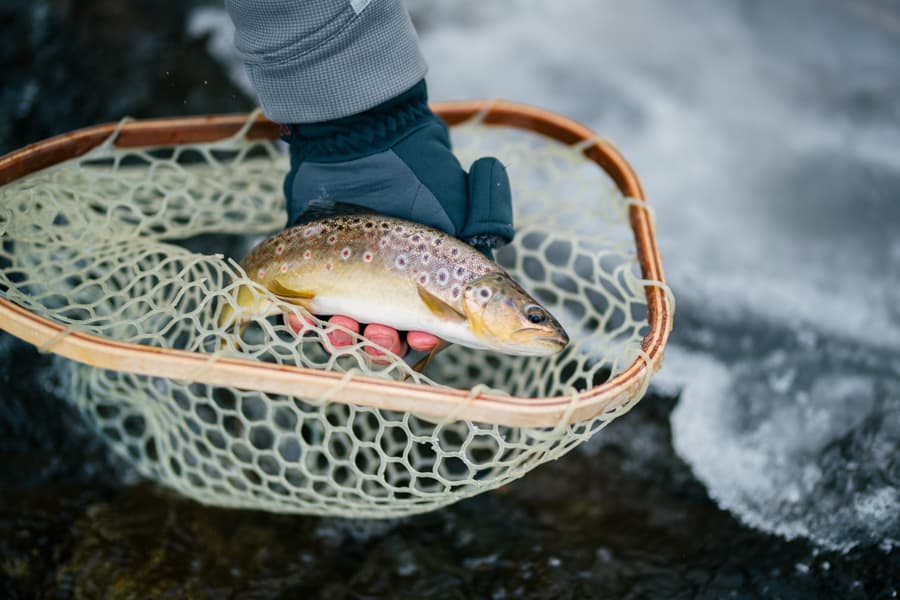

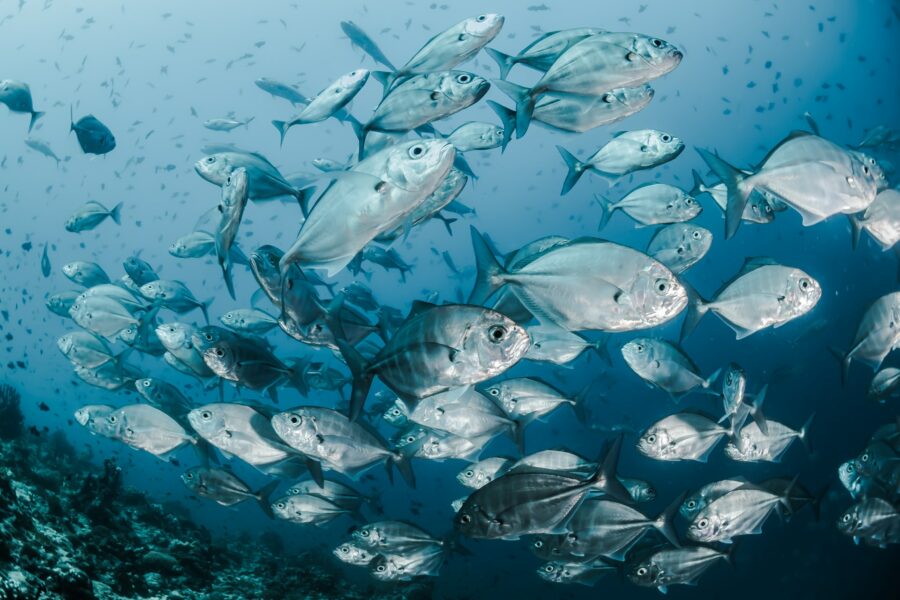

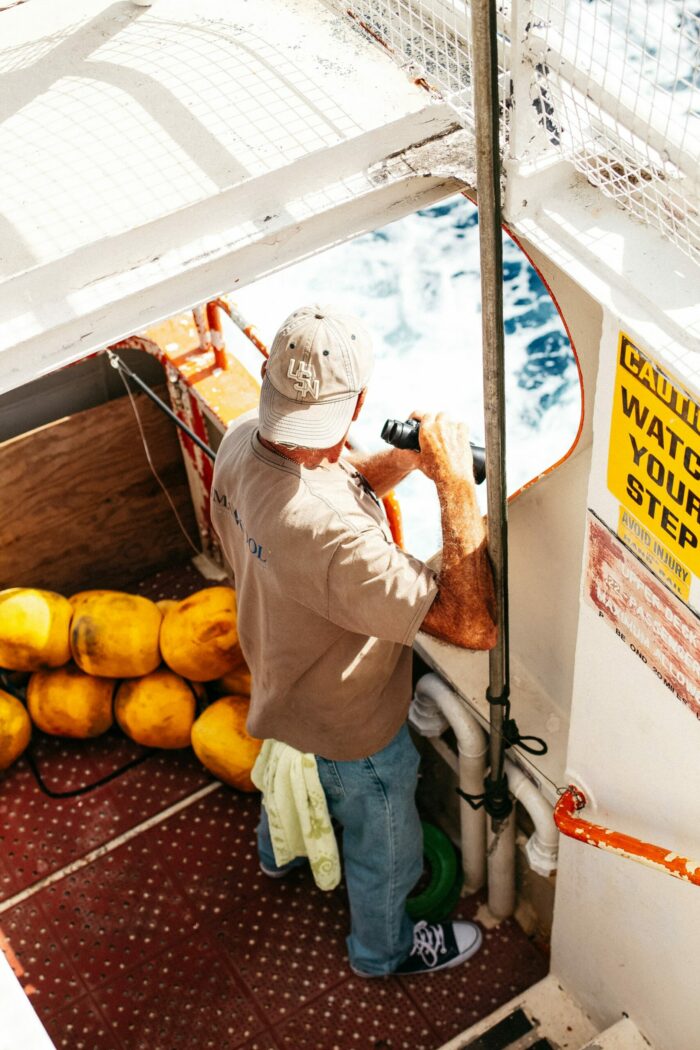




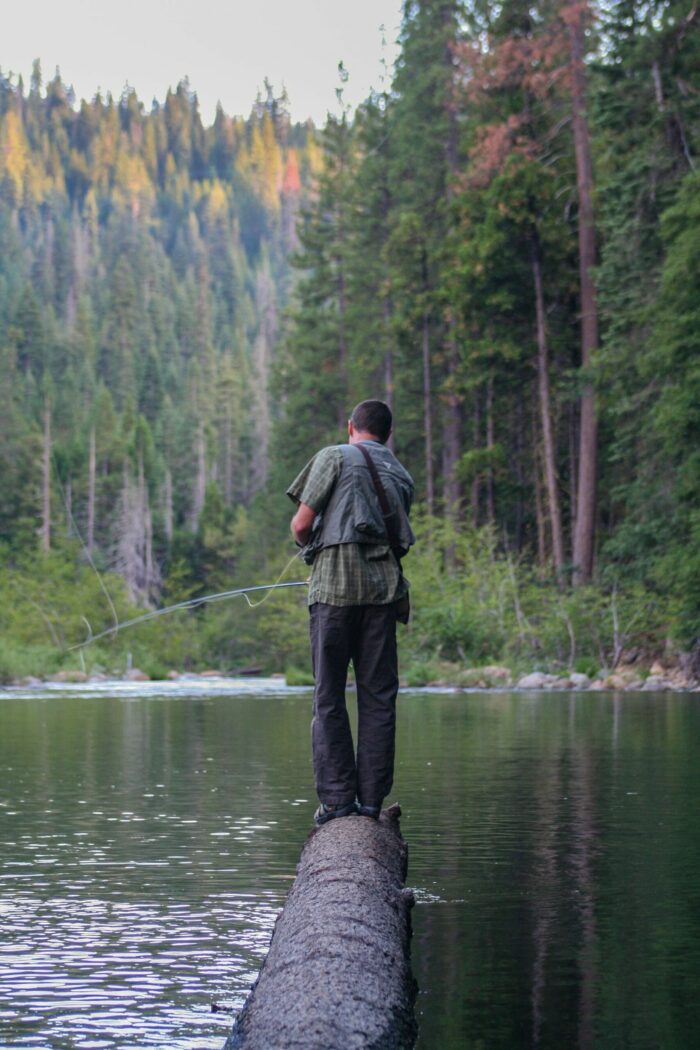
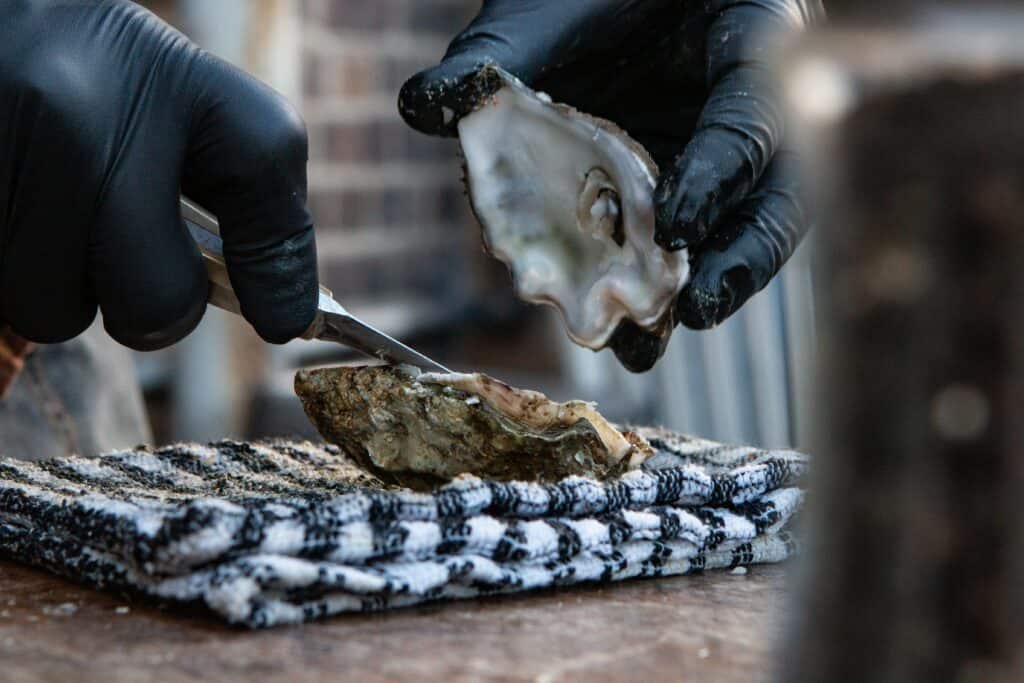

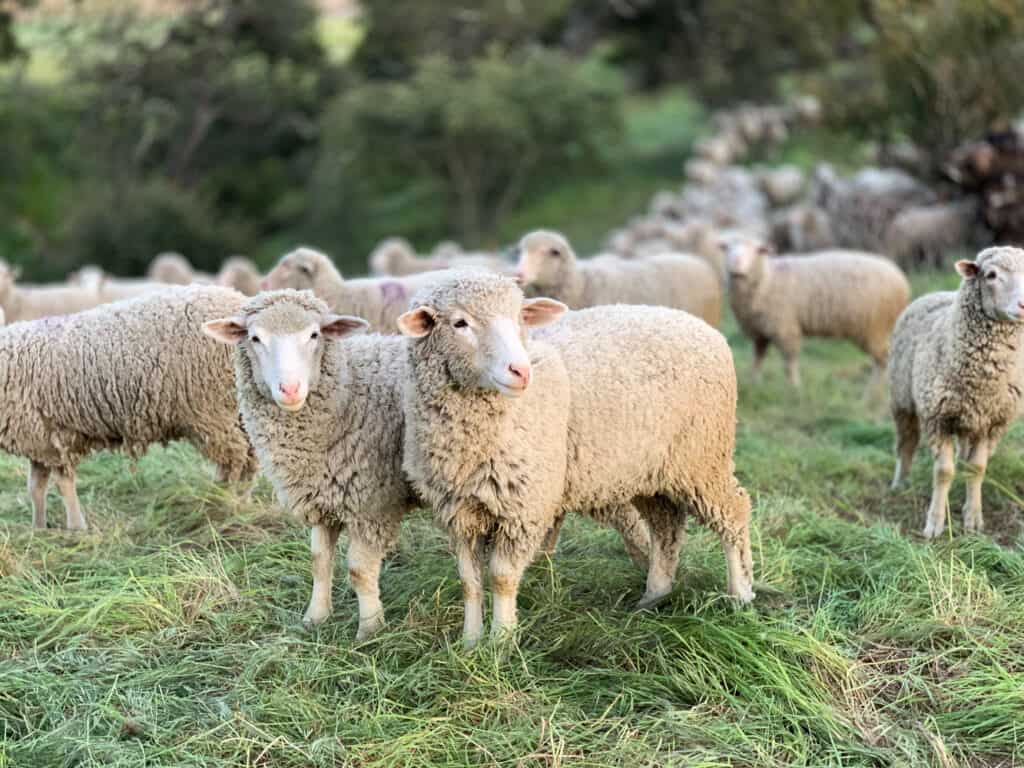

So many great points here. There is nothing ethical about fishing. An individual that catches and eats a fish is unnecessarily taking a life. Commercial fishing is also destroying our oceans, which in turn is destroying our planet. Sadly, it’s all about money. Thankfully more and more people are becoming vegan, reducing the demand for seafood as well as the demand for meat from land animals. Companies long known for killing animals are beginning to see the writing on the wall and are beginning to market vegan products because they see a growing market. Years ago a mayonnaise producer in the US sued another company that was making vegan mayonnaise because they called their product ‘mayo’. To make a long story a bit shorter, the suit was eventually dismissed, and fast forward a bit…today the company that brought the suit is now making their own version of vegan mayonnaise. There are innovative companies now making vegan “seafood” that have all the taste and texture with none of the cruelty, toxic chemicals, and environmental damage. As the demand grows, prices will come down and current seafood companies will begin to jump on the bandwagon, just as is happening for meat from land animals.
very insightful! I still love salmon though, and will wean off my habit of eating the stuff using nicotine patches over the next 2 years!
I think sea animals are the first that need to be protected. As a vegan, I am often surprised about how hard is to find multivitamins that are not made with animal products. I personally use Terraseeds vitamins, they use ZERO animal products and no plastic.
Thank you so much for this concise and comprehensive information.
Our pleasure Lorraine. Glad you found this to be helpful.